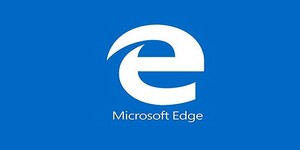
Microsoft has become the latest browser maker to downgrade Adobe's Flash Player plugin, announcing that future releases of its Edge browse will disable automatic playback of peripheral Flash content.
Adobe's Flash has two problems: an image problem stemming from a deeper security problem. The company's Flash Player hits the headlines on a regular basis for a stream of security vulnerability which leave users' systems open to remote malicious code execution, with the latest security patch coming from the company only this week. Last year Google, which bundles a version of Flash with its Chrome browser, declared enough and disabled playback of Flash adverts by default; now Microsoft is joining it in this stance.
Future versions of Edge, Microsoft's next-generation web browser written as ground-up replacement to Internet Explorer, will disable automatic playback of 'peripheral' Flash content. 'Peripheral content like animations or advertisements built with Flash will be displayed in a paused state unless the user explicitly clicks to play that content,' explained the team behind the software in a blog post this week. 'This significantly reduces power consumption and improves performance while preserving the full fidelity of the page. Flash content that is central to the page, like video and games, will not be paused.'
The first version of Edge to feature blocking of peripheral Flash content will appear in Windows 10 Build 14316, available now to members of the company's Windows Insider beta test programme.
Adobe's Flash has two problems: an image problem stemming from a deeper security problem. The company's Flash Player hits the headlines on a regular basis for a stream of security vulnerability which leave users' systems open to remote malicious code execution, with the latest security patch coming from the company only this week. Last year Google, which bundles a version of Flash with its Chrome browser, declared enough and disabled playback of Flash adverts by default; now Microsoft is joining it in this stance.
Future versions of Edge, Microsoft's next-generation web browser written as ground-up replacement to Internet Explorer, will disable automatic playback of 'peripheral' Flash content. 'Peripheral content like animations or advertisements built with Flash will be displayed in a paused state unless the user explicitly clicks to play that content,' explained the team behind the software in a blog post this week. 'This significantly reduces power consumption and improves performance while preserving the full fidelity of the page. Flash content that is central to the page, like video and games, will not be paused.'
The first version of Edge to feature blocking of peripheral Flash content will appear in Windows 10 Build 14316, available now to members of the company's Windows Insider beta test programme.

MSI MPG Velox 100R Chassis Review
October 14 2021 | 15:04








Want to comment? Please log in.